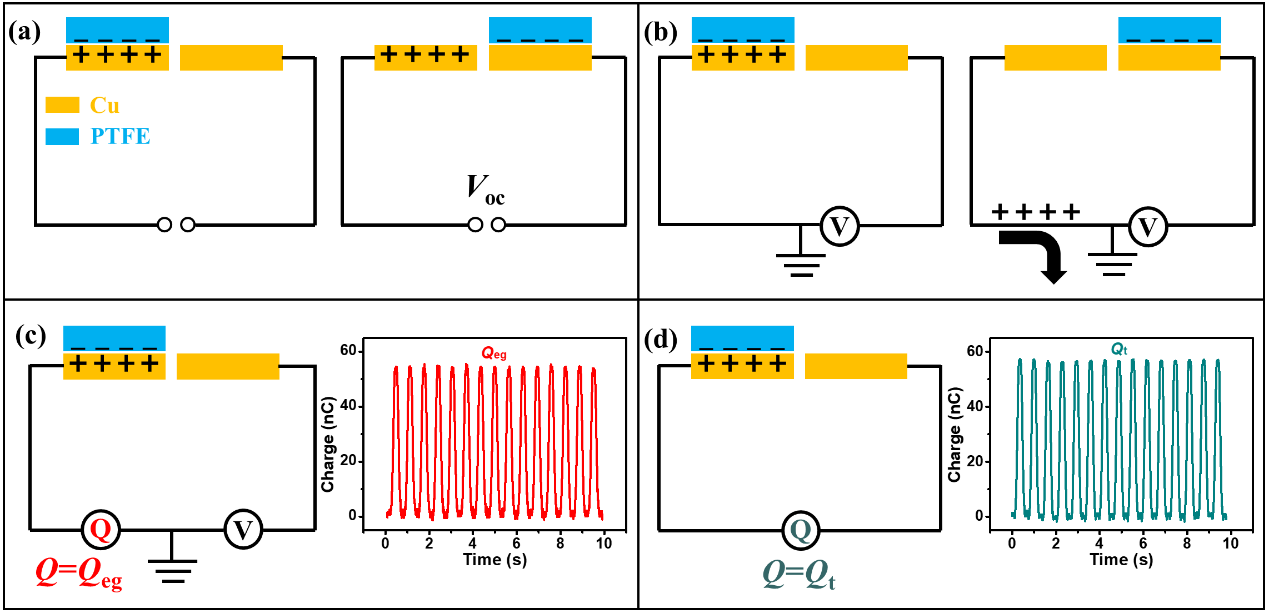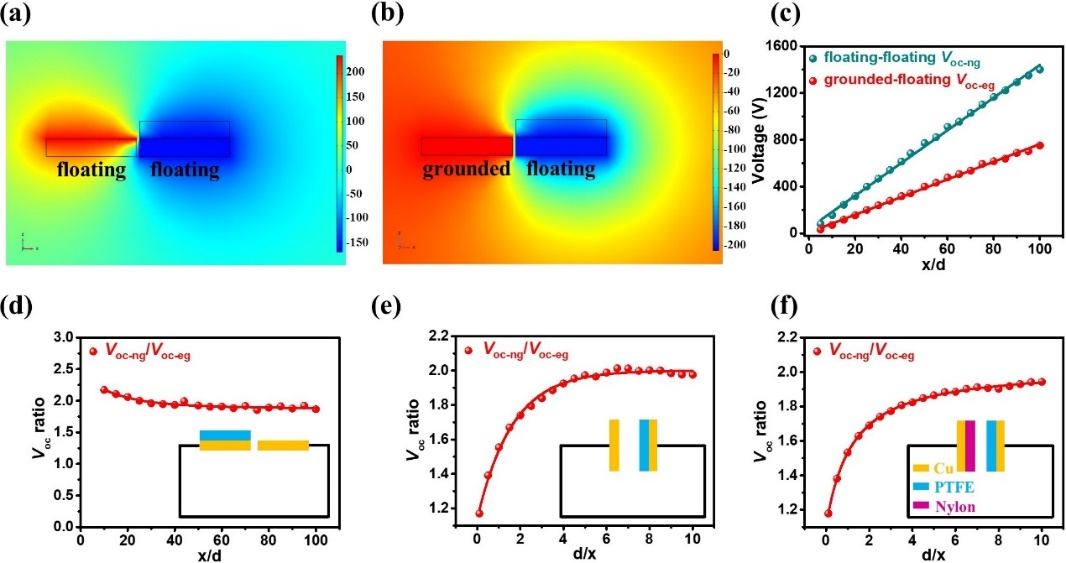Recently, the research result of Prof. Gang Cheng's group "Measuring the Actual Voltage of a Triboelectric Nanogenerator Using the Non-grounded Method" was published in the famous international journal Nano Energy (IF=16.602, JCR District 1).
Article link: https://doi.org/10.1016/j.nanoen.2020.105108
Triboelectric nanogenerator (TENG), as a new mechanical energy harvesting technology, can harvest various mechanical energy into electricity from the surrounding environments, including human motion, mechanical vibration, tire rotation, water droplets/flowing, wind flowing, and etc. The working mechanism of a TENG is based on the coupling of contact electrification and electrostatic induction effects, and its principle can be traced back to Maxwell’s displacement current. TENG has the advantages of light weight, simple structure, low cost, high energy conversion efficiency at low frequencies, and etc. Different working modes of TENGs have been developed, such as vertical contact-separation mode, contact-sliding mode, single-electrode mode, and freestanding triboelectric-layer mode. Based on these working modes and their combinations, TENGs have made significant progresses in the fields of micro/nano energy harvesting, self-powered sensors and systems, blue energy, and high-voltage source. Measuring the voltage signals, including open-circuit voltage (Voc) and output voltage on an external load resistance, is of great importance to characterizing the output performances of a TENG. However, since one electrode of TENG is connected to the ground in the traditional measurement methods, the charges in this electrode are transferred to the ground, causing the underestimated voltage values. Therefore, it is necessary to develop measurement methods of the actual voltage values, for accurately evaluating the performances of a TENG.
In this work, the non-grounded measurement configuration for voltage has been proposed by disconnecting both electrodes of the TENG with the ground. Within the non-grounded configuration, three measurement methods are developed. From the measurement results of Voc and output voltage, it is obtained that the voltage ratio of non-grounded methods to grounded methods are about 2.0 and 1.5 for sliding type and vertical type TENGs, respectively. The non-grounded and grounded voltages for three modes TENGs have been simulated using the finite element method (FEM), which match well with the measurement results. Furthermore, the relations between the voltage ratio and the parameters of the TENGs are also calculated, which provide a simple method for estimating the actual voltage using the results measured by grounded methods. Also, the non-grounded method has been applied in the TENG-induced micro-plasma to demonstrate its ability to measure the actual output voltage. The non-grounded measurement methods proposed here can measure the actual voltage of TENGs, which are of great significance to accurately evaluating the performances of TENGs.

Fig. 1. Demonstration the electrode-ground charge transfer during the grounded measurement method of Voc of TENG, here, a sliding freestanding triboelectric-layer mode TENG is selected as an example. (a) The equivalent circuit for measuring Voc under ideal condition. (b) The equivalent circuit for measuring Voc by grounded measurement method. (c) The equivalent circuit for measuring the transferred charge between electrode and the ground by grounded measurement method of measuring Voc and the measured transferred charge. (d) The equivalent circuit for measuring the total transferred charge and the curve of the total transferred charge of the TENG.

Fig. 2. Three-dimensional model finite element method calculation of the Voc of three modes TENGs in the non-grounded and grounded cases. The potential distribution of a sliding freestanding triboelectric-layer mode TENG in the non-grounded (a) and grounded (b) cases. The open-circuit voltages of the sliding freestanding triboelectric-layer mode TENG under different x/d in the non-grounded and grounded cases (c). The Voc ratio of the sliding freestanding triboelectric-layer mode TENG under different x/d in the non-grounded and grounded cases (d). The Voc ratio of different working mode TENG under different d/x in the non-grounded and grounded cases: metal-dielectric vertical contact-separation mode TENG (e), dielectric-dielectric vertical contact-separation mode TENG (f). The inset of (d–f) is the equivalent circuit of the corresponding working mode of TENG, respectively.
Master student Wenhe Zhang and Dr. Guangqin Gu are the co-first authors of the paper, and Prof. Gang Cheng and Prof. Zuliang Du are the co-corresponding authors of this paper. This work was supported by funding from the National Natural Science Foundation of China, the Science and Technology Department of Henan Province and Henan University.